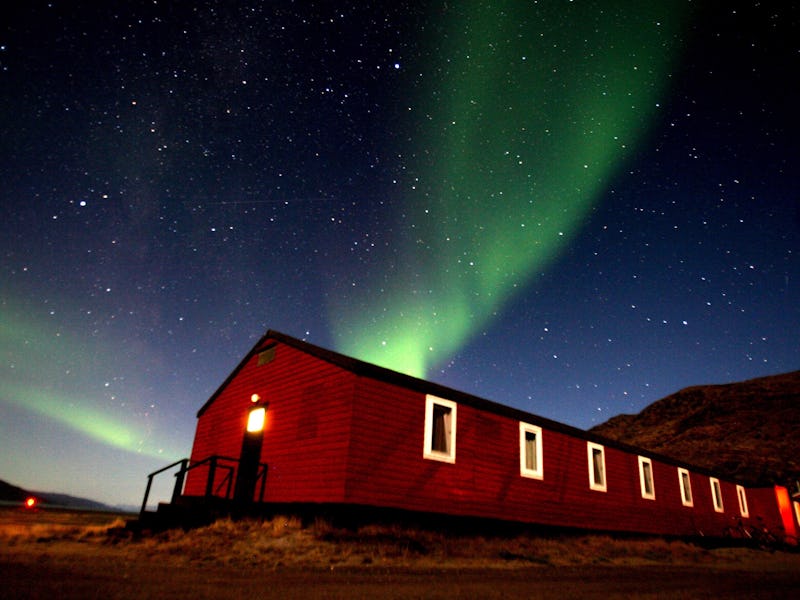A Solar Storm Could Spark Amazing Auroras Tonight
They might even be visible in the Lower 48.

A strong geomagnetic storm hit planet Earth Tuesday, caused by solar winds ejected at speeds of millions of miles per hour from a hole in the sun’s corona, warned the National Oceanic and Atmospheric Administration (NOAA).
This space weather poses no danger to humans or other biological inhabitants of the planet, although it has the potential to disrupt satellites, power grids, and radio communications.
We are fortunately protected by Earth’s own magnetic field, which literally explodes as it interacts with the charged particles blasted out from the sun. The gorgeous side effect of this process is the aurora — dancing colorful lights that appear in the sky, particularly as you get closer to the polar regions.
Some residents of both the northern and southern hemispheres were treated to a particularly wondrous display overnight Monday, and the lights are expected to continue through Tuesday night. Aurora, produced by a storm of this intensity, might be seen as far south as Oregon or Illinois. For the best seats, though, you’d better get yourself up to Alaska or northern Canada, pronto.
About this particular aurora, heed the advice of the people at Aurora Notify (who, by the way, have a great directory of aurora web cams):
There is no “best time,” and there is no “it usually comes out at….” On a typical night, the aurora comes out before midnight, then again, later in the night. But it also comes out AT ANY TIME THE DATA IS IN ALIGNMENT. This is not new age talk, it is the alignment of the interplanetary magnetic field.
If you can’t head north, your best bet is to get yourself to the darkest place you can find, and hope for clear weather. We’re less than a week from the new moon, which is close to ideal. Don’t expect the brilliant displays you see in long-exposure photography — look instead for pale streaks of green rising up from the northern part of the sky.
The most common mistake of amateur aurora hunters is that heading to the far north guarantees a show. In fact, a lot of factors go into the likelihood of aurora sightings, and many of them are predictable.
Cloud cover will instantly put a damper on plans, even in the midst of the most brilliant solar storm, though there’s not much to be done about the weather. The darker the sky, the better your chances, so go hunting when the moon is small, or not up in the sky.
Solar storms are also seasonal, with peaks in the fall and spring. And for Pete’s sake don’t head to the High Arctic in June, expecting a light show — on the longest days of summer it never gets dark enough to give the aurora even a glimmer of hope of shining through.
Our sun’s activity also cycles, in periods of about 11 years, as magnetic activity ebbs and flows. Activity in the current cycle peaked in 2014, and it has so far, been among the weakest solar cycles on record. If you’re the type for long-term planning, stay tuned to NASA and NOAA space weather reports, and get excited for the aurora viewing trip of your dreams sometime around 2025.